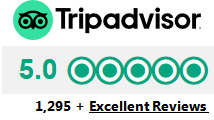My Solo Trip to Datong ( Second Day )
The buffet at Yungang International Hotel is fairly good. Milk, yogurt, coffee, tea and fruit drinks, various kinds of bread, omelet, bacon, ham and much more Chinese style of breakfast like rice porridge, Millet porridge, steamed corns, boiled eggs etc. It is located on the first floor, actually a lobby bar at the time of no breakfast.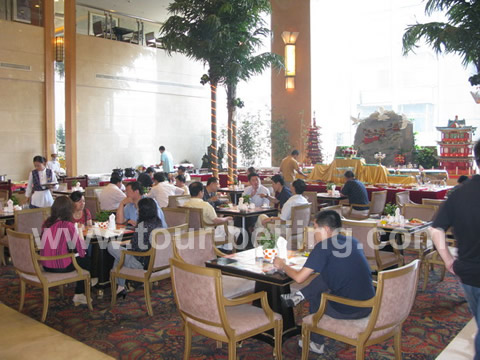
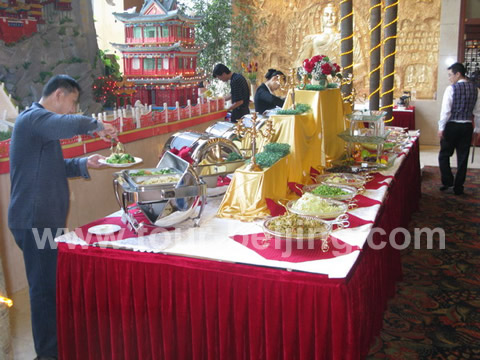
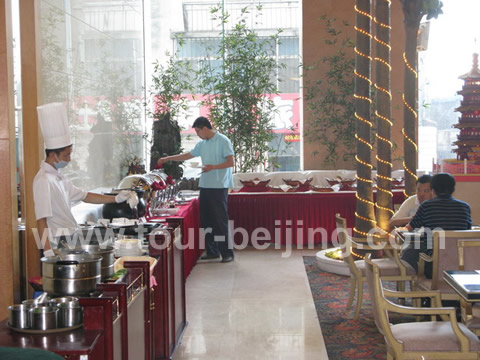
Last night I didn't see clearly the hotel exterior. So the first thing I do when go on with my trip today is to take a photo of its outside face. A nice hotel with super location.
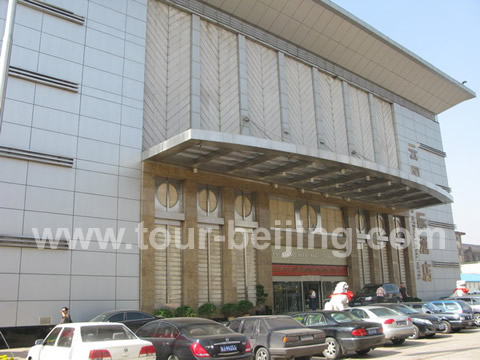
The hotel staff are kind and helpful. I plan to spend the whole morning on the sightsseing of Yungang Grottoes. The hotel bellboys tells me it costs about RMB 50 if you take a taxi to get there. He suggests me to take the tourist bus and it's cheap and convenient. I decide to follow his advice of using a public bus instead of a taxi. It is really a kind of adventure for me since for many years I haven't taken any bus as a transportation tool! Out of the hotel, I turn to the right and walk along Daxijie ( westward ). It is quite easy to memorize the main streets of the downtown area in Datong. It has four main streests, namely Dabeijie ( Big North Street ), Dadongjie ( Big East Street ), Dananjie ( Big South Street ) and Daxijie ( Big West Street ). There are four valuable tourist spots in Datong. With Yungang Caves 16 KM in the west suburb, the other three are located within the three main streests. So it is wise first to finish the Yungang Caves and then come back to the downtown area to see the rest of the sites. Walking about 10 minutes, I get to the famous place in Datong - Red Flag Square, the largest square in Datong. In China, many cities has one big public square in the center of the cities, an imitation of Tiananmen Square in Beijing. About 100 meters south of the Square on the Xinjiannanlu, I locate the bus station where I do find the special tourist bus No. 3-2 starting from Datong Train Station to Yungang Caves. It only costs me RMB 2 to get to Yungang Grottoes!!
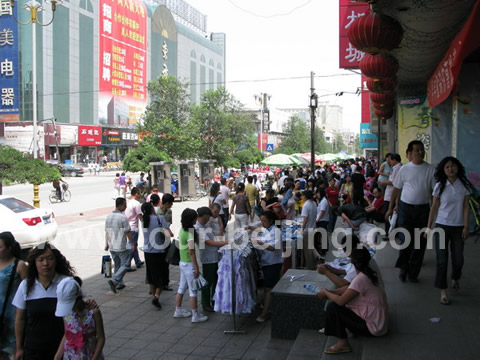
Daxiejie ( Big West Streest ) is a commercial street
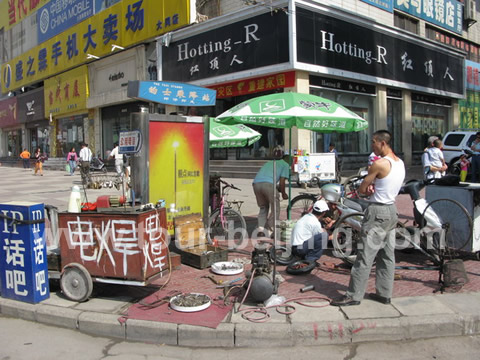
I come across a site for bike repairs
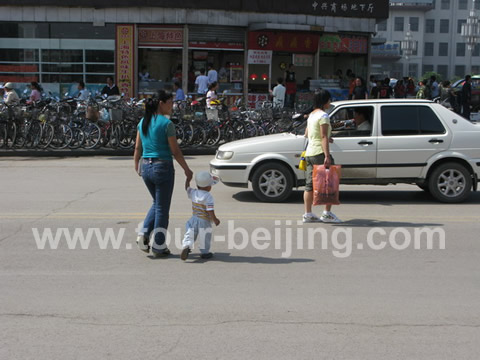
But the local traffic is a bit crazy, pedestrian crossings is apparently quite random!
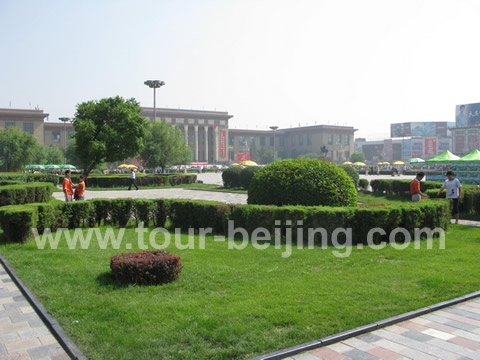
The famous Red Flag Sqaure
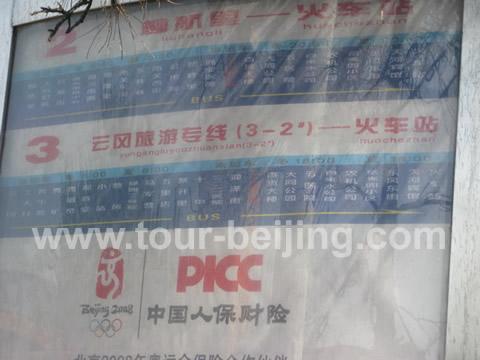
Bus No.3-2 - a tourist bus from Datong Train Station to Yungang Grottoes. There are 25 stops on the line. I start from the 10th stop - Workers' Club and takes about 40 minutes to get there.
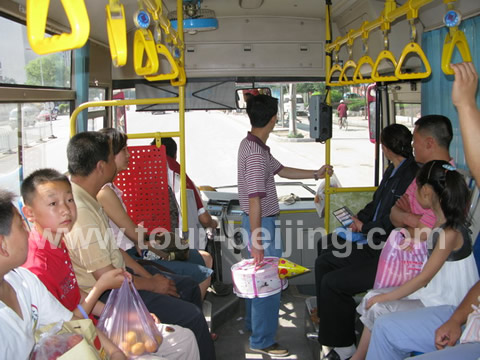
Get on the bus from its front door where the conductoress sells tickets and get off the middle door.
40 minutes later, I get off and follow other tourists melting into the commercial road to the main entrance to Yungang Caves. I feel first warmly welcomed by the vendors on both sides of the road. Most of them sell almost the same tourist staff - rocks, fake antiques etc. Ignoring the tourist junk, I go to the ticket-office to buy the entrance fee and also buy two tourist maps of Datong and Shanxi. The admission ticket costs me RMB 60. When you enter the open gate to the caves, you will see a big rock signboard carved with the words in Chinese - Yungang Grottoes, a world culural heritage.
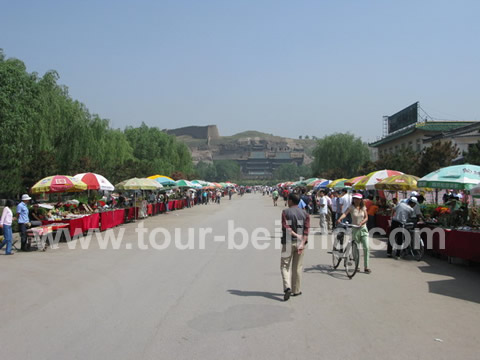
A commercial road before you see the caves
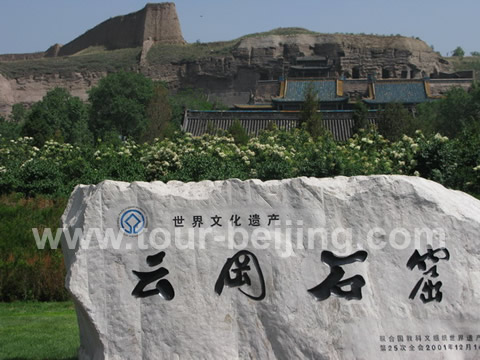
A big rock signboard carved with the words in Chinese - Yungang Grottoes, a world culural heritage.
In the year of 398 AD, Datong was set up as the capital city of Bei Wei Dynasty. In 439 AD, Bei Wei Dynasty moved its capital city to Luoyang. The 97-year as a Bei Wei capital has left huge cultural heritage of that time to Datong. Bei Wei Dynasty was established by Tuoba, a group of minority people coming from north-east China. It was the longest lived and most powerful of the northern Chinese dynasties that existed before the reunification of China under the Sui and Tang dynasties. It lived 149 years (AD 386–534) with 14 emperors in succession.
Bei Wei Dynasty used Buddhism to control its people in the northern China. The buddhist grottoes were cut along the slope at the foot of Zhoushan, 16 km west of Datong. On the one-kilometer carved area, now there are still 45 caves preserved with over 51000 carved buddhist statues. All the carving is classified into three periods: the early period, the prime period and the late period. Of the 45 caves, there are mainly 20 caves which you can see clearly. The 20 caves went through three periods - early, prime and late.
The early period includes the five huge caves from Cave No.16 to Cave No.20. All the five caves were the blend of the buddha and the five emperors in Bei Wei Dynasty. Each Carved Buddha represented an emperor during that time.
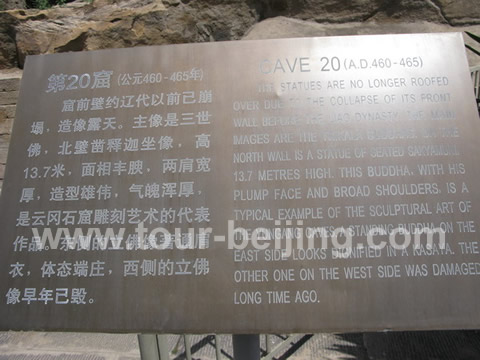
Brief Introduction to Cave No.20
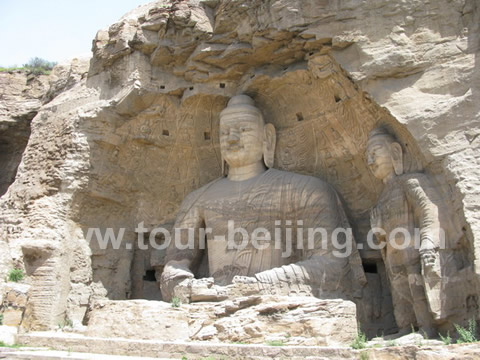
The earliest caved carved, incarnation of both Buddha and the first emperor of Bei Wei Dynasty - also representative of Yungang Caves
More pictures taken of the other 4 important earlier period of the carving.
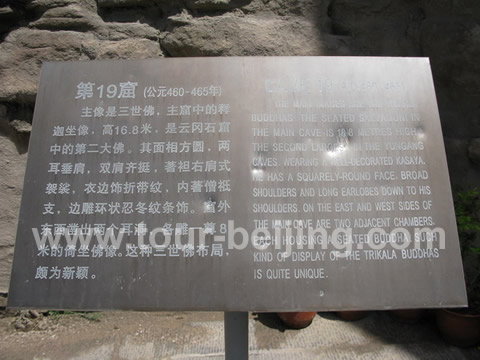
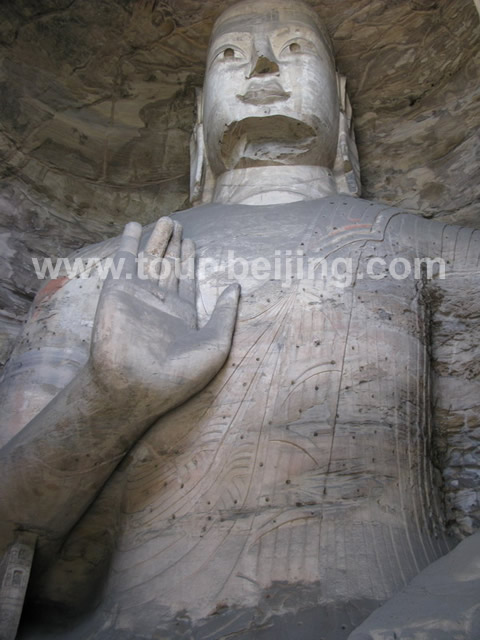
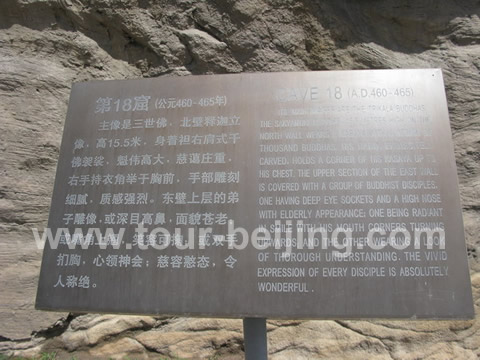
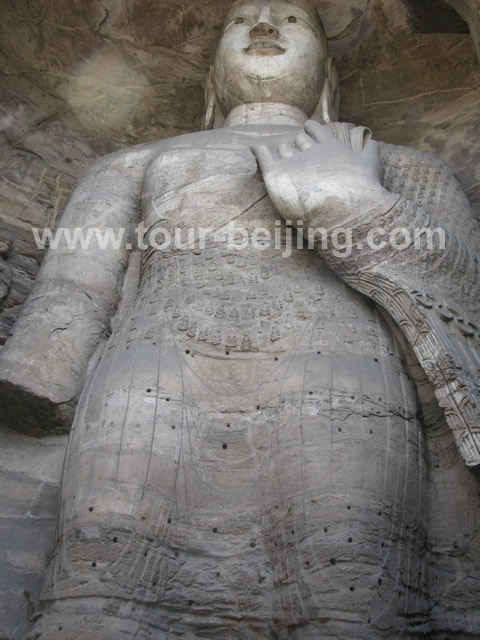
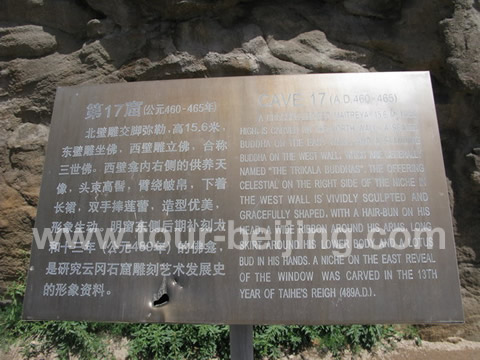
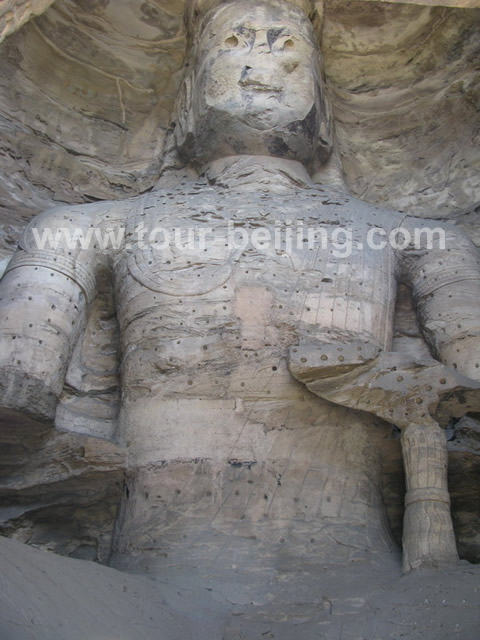
The prime time for the grottoes carving covers the caves Cave No.7 & 8; Caves No. 9 & 10 and Caves No. 5 & 6. All the caves listed here each has two chambers in one cave - the front and back. The carving during this prime time was much more lavish and Chinese.
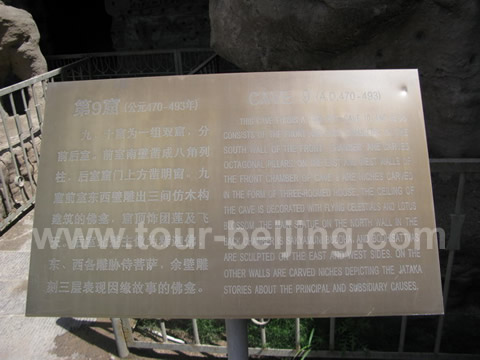
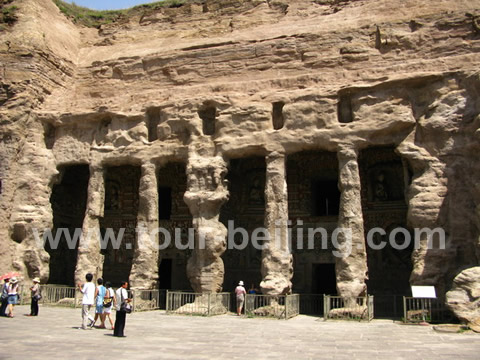
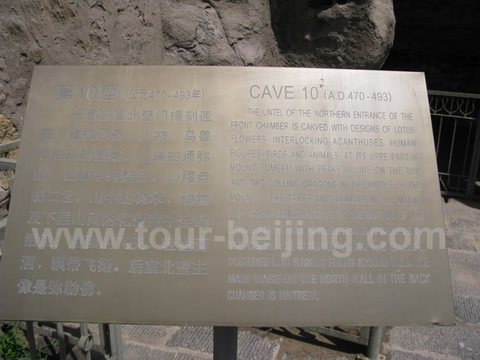
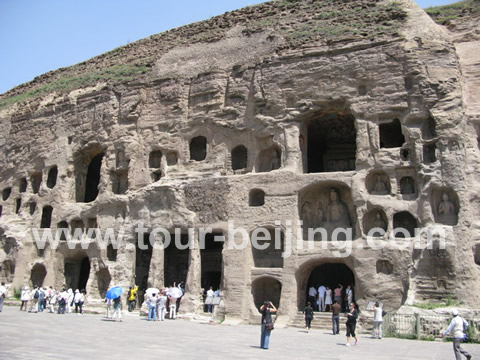
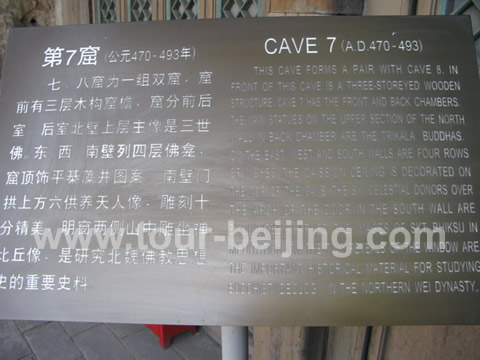
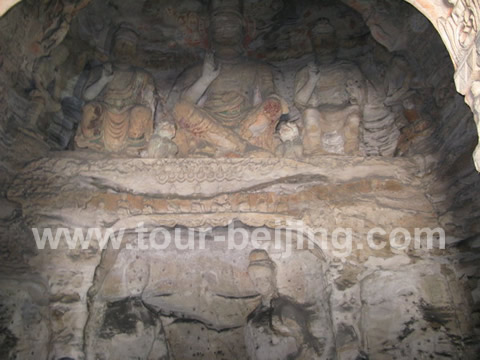
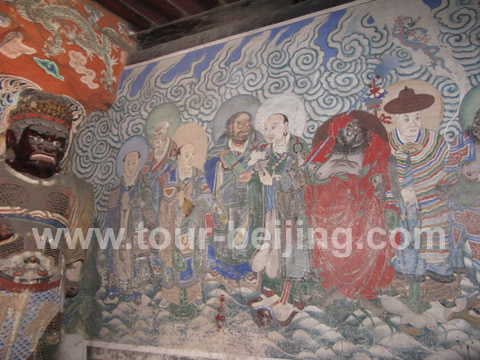
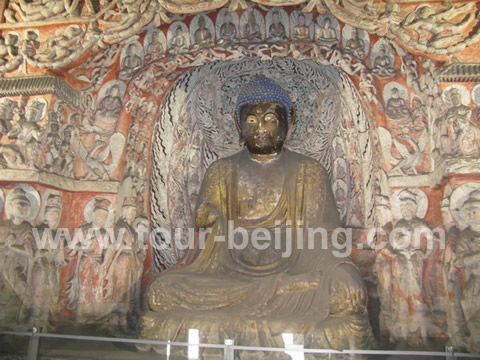
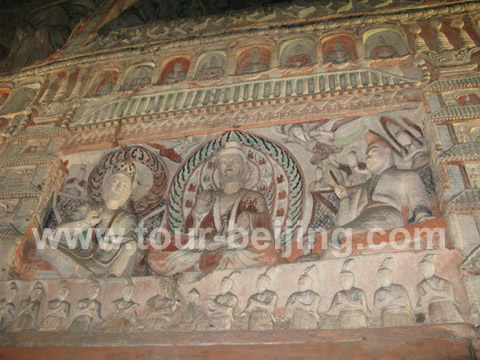
Later period carving including some small caves carved by some officials and monks instead of by the dynasty itsself.
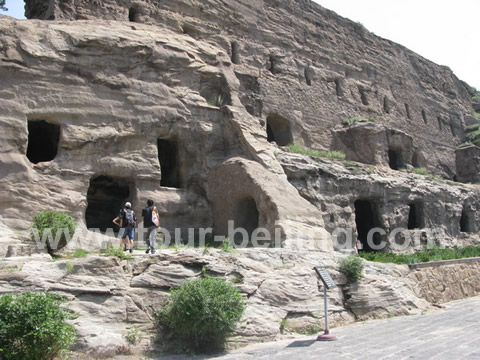
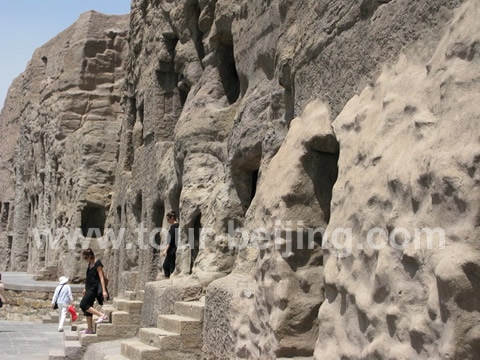
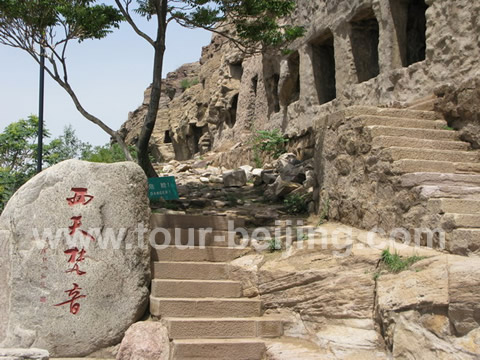
After two hours' visit to the Yungang Grottoes, I went back to the downtown Datong by the same tourist bus No.3-2.
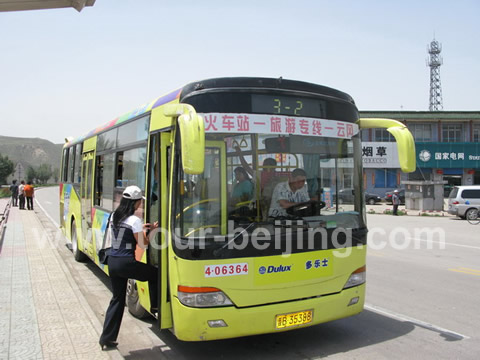
| Previous | 1 | 2 | 3 | 4 | 5 | 6 | Next |
Questions & Answers:




